Lab - Eye & Ear Anatomy
1/32
There's no tags or description
Looks like no tags are added yet.
Name | Mastery | Learn | Test | Matching | Spaced |
|---|
No study sessions yet.
33 Terms
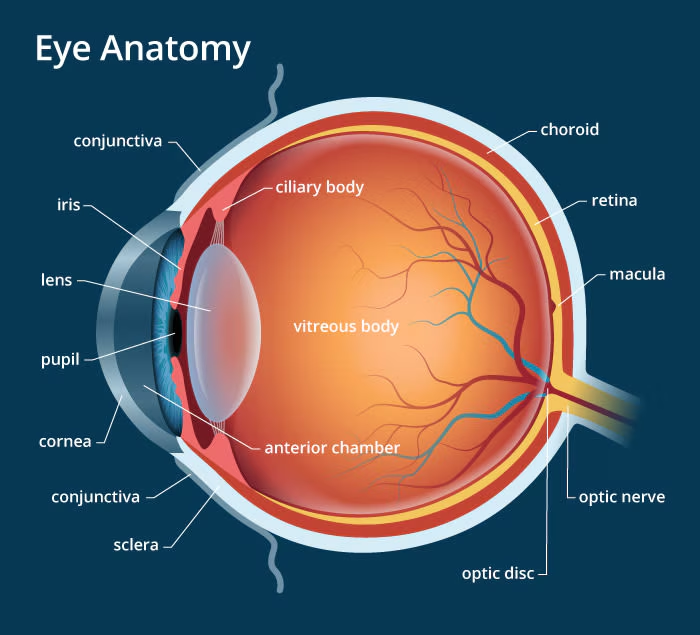
conjunctiva
mucous membrane covering the sclera, but not the cornea
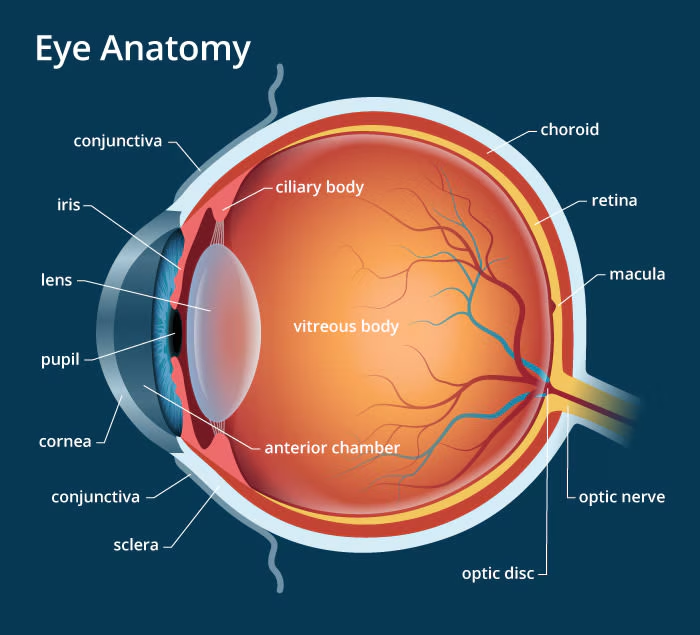
pupil
black hole in the center of the iris
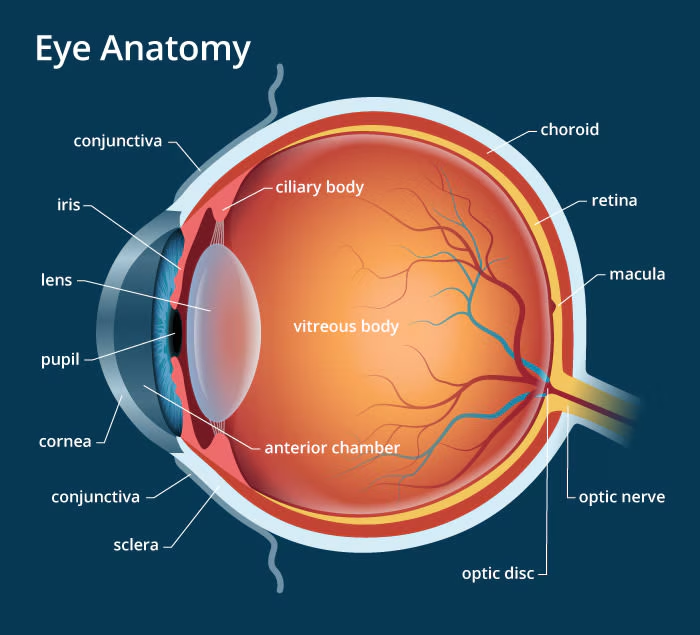
aqueous humor
watery fluid in the anterior chamber that provides
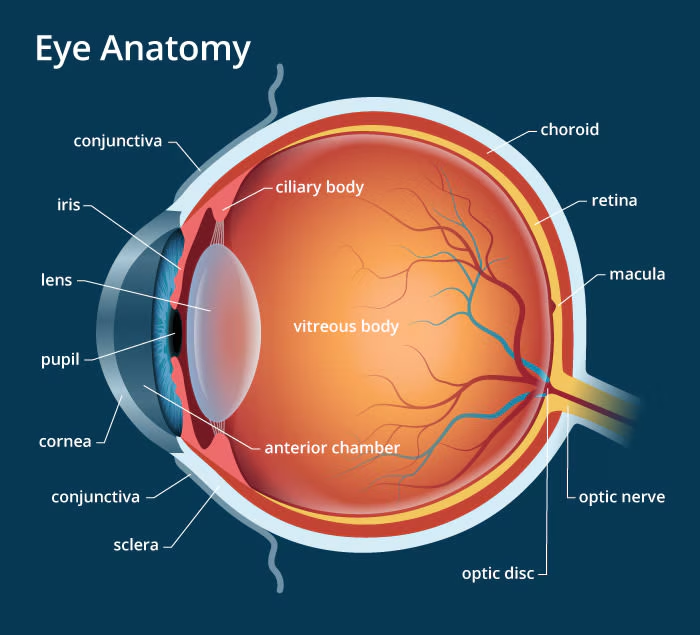
vitreous humor
jelly-like substance that fills the vitreous chamber between the lens and retina
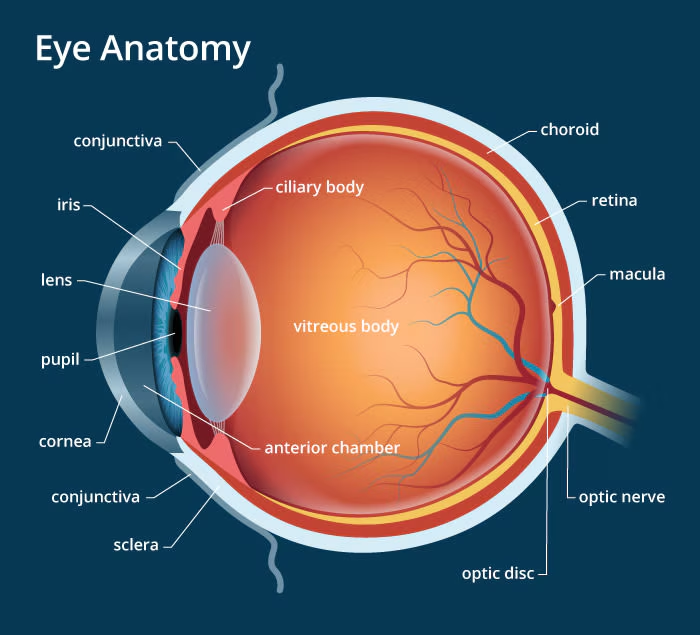
sclera
outermost layer of the eye
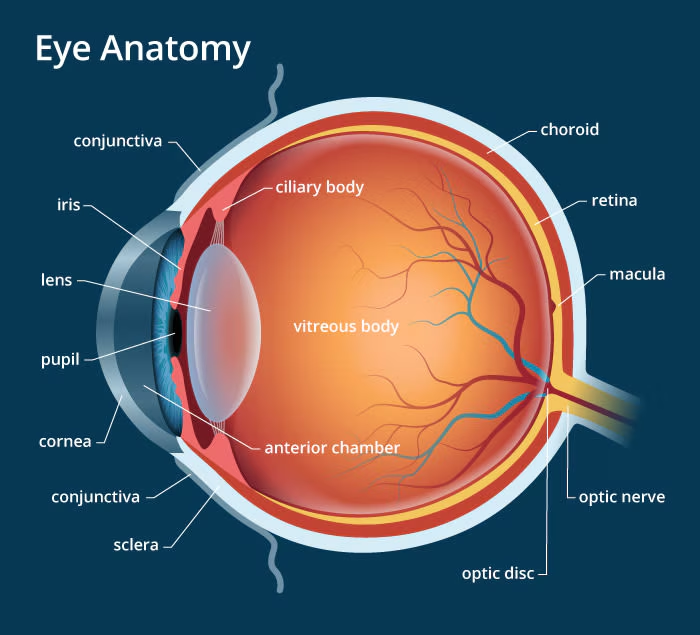
cornea
anterior portion of the eye allowing light to enter
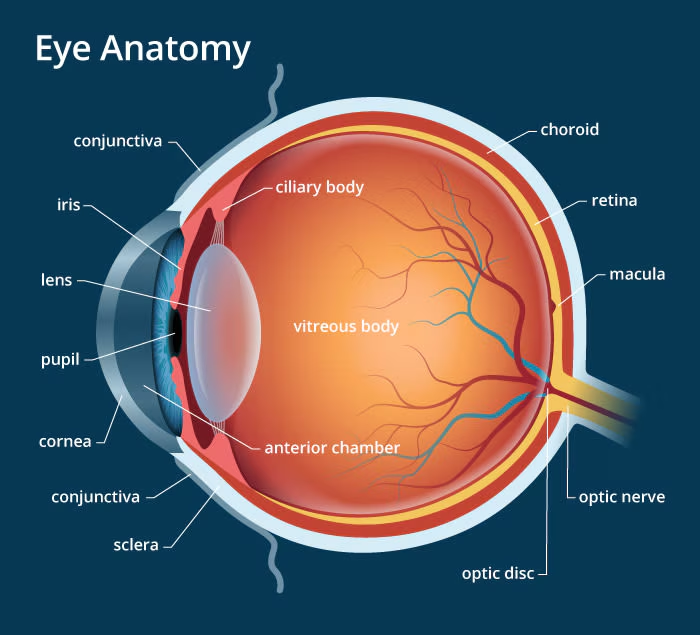
iris
colored portion of the external eye
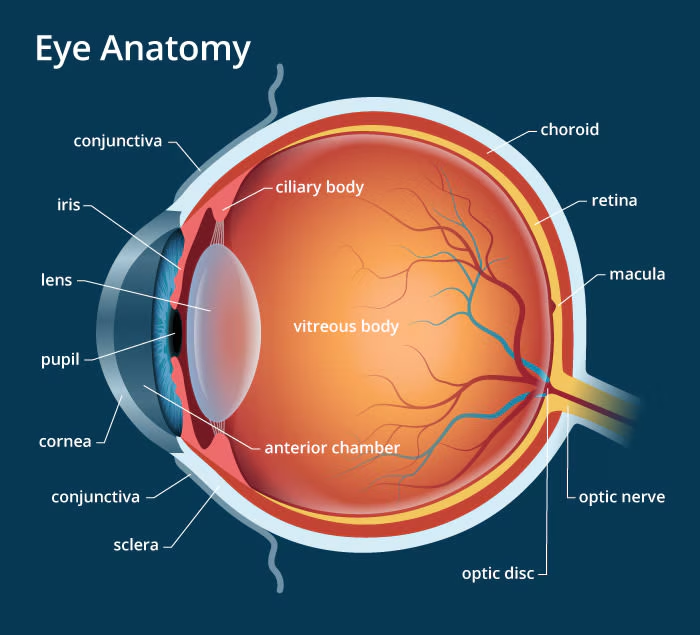
lens
transparent, biconvex-shaped
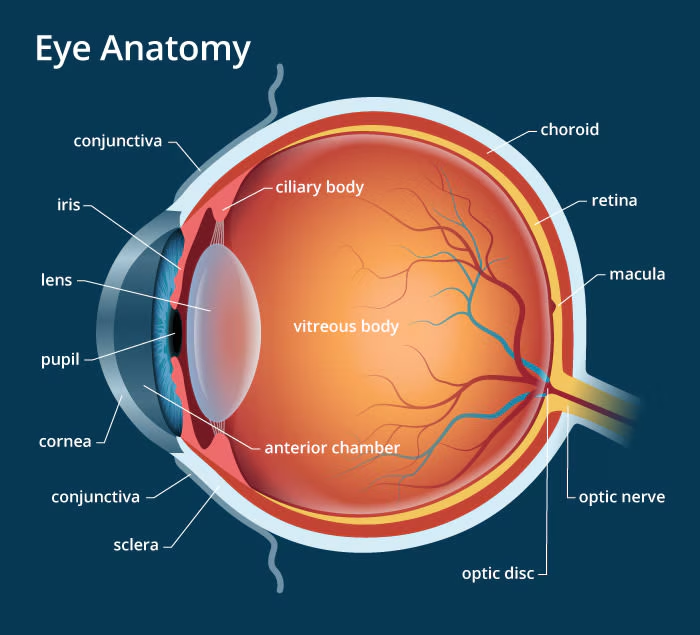
choroid
dark brown, lots of melanin, rich in blood vessels
absorbs excess light
suspensory ligaments or zonular fibers
attach lens to ciliary body
ciliary body
made of smooth involuntary muscles
contraction changes thickness of lens
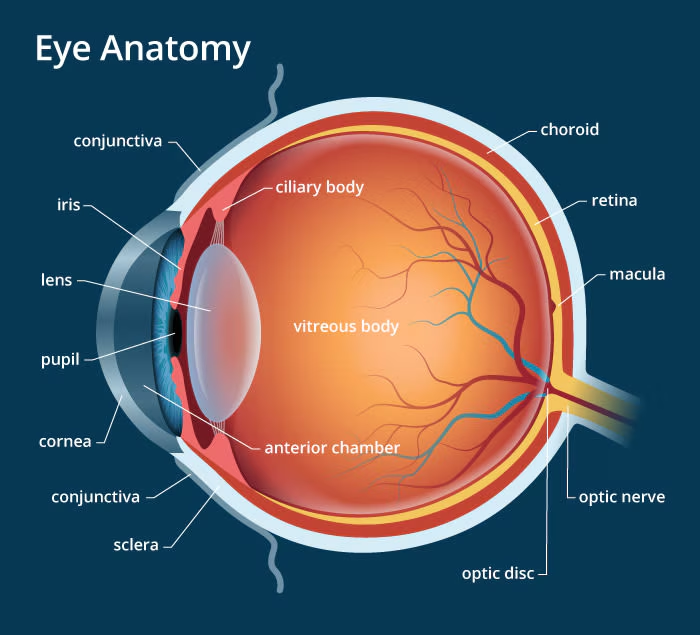
retina
light-sensitive innermost layer of the eye
photoreceptors
rods & cones
responsible for converting light into electrical signals
rods
dim light vision, distinguish shades
cylindrical
cones
bright light vision, color vision
conical
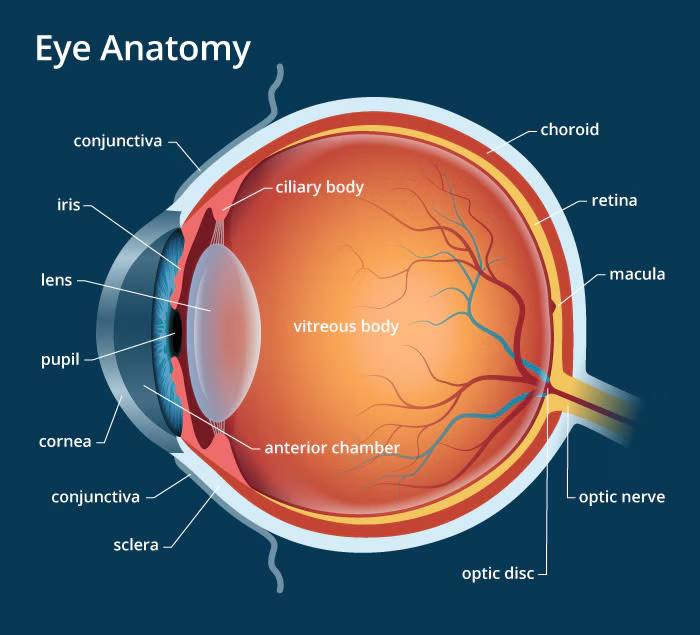
optic disc
blind spot
where the nerve fibers of the photoreceptors communicate with the optic nerve
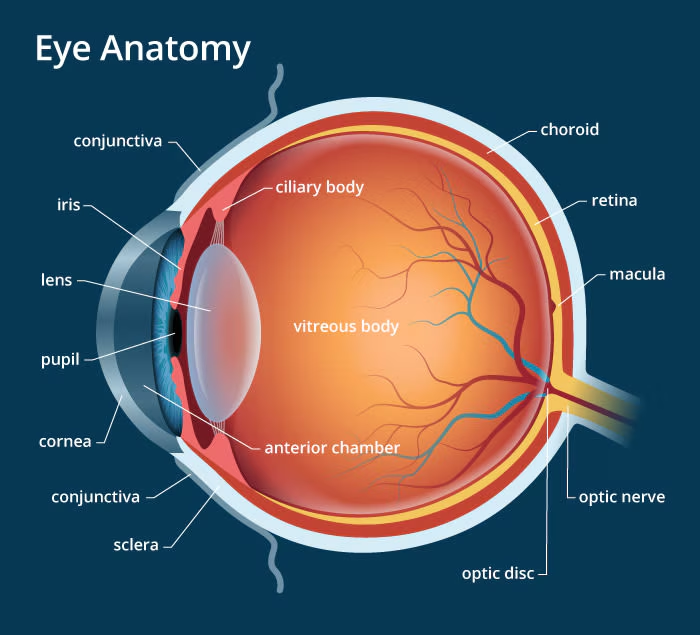
fovea centralis
pit-like depression in the retina
high concentration of cones
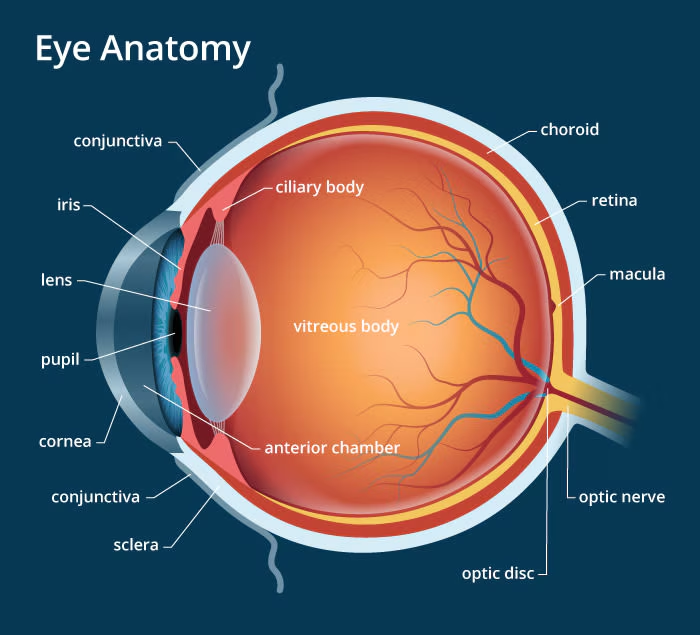
macula lutea
oval-shaped area located in the central of the retina at the back of the eye
auricle
reinforced with elastic cartilage
visible outer part of the ear
external auditory meatus
ear canal
tympanic membrane
eardrum
vibrates
ossicles
middle bone
malleus, incus, stapes
malleus
hammer
incus
anvil
stapes
Connects ossicles to vestibule
cochlea
snail’s shell
contains sensory receptors for sound
vestibule
oval window
where stapes connect to vestibule
pharyngotympanic tube
auditory tube or Eustachian tube
vestibular branch
part of the vestibulocochlear nerve that connects to the vestibule
cochlear branch
part of the vestibulocochlear nerve that connects to the cochlea
semicircular ducts
fluid-filled tubes branching off the vestibule
aid in balance or sense of equilibrium
ampulla
enlarged portion of each of the semicircular ducts